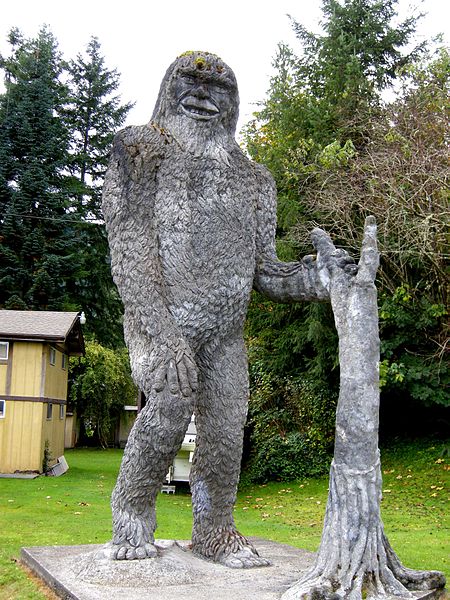The science (?) of cryptozoology

Unicorns and dragons and bigfoots and chupacabras. Lizard people living beneath the surface of the earth and abominable snowmen. The first thing that pops into your head when you hear of such creatures may be thoughts of people with tin-foil hats, running through the woods in their underwear with cameras on their shoulders screaming about how only they know the truth. But there are actually groups of serious people that are dedicated to studying such things. It’s an area of “science” known as cryptozoology and though they are often mocked by the more conservative scientific community, they still continue their pursuit of strange knowledge. They may, in fact, be right about certain things and we don’t even know it.
Before you tune out and mutter something about the crazy person posting about bigfoot, hear me out. I may not believe that there are unicorn bones lurking beneath the Earth somewhere, but I do certainly believe in the possibility that more unusual creatures may have existed in the past and that, just maybe, remnants of these species could have survived to modern day.
Cryptozoologists, contrary to just being a group of people that chase bigfoots (bigfeet?), are actually a sort of sub-species of scientist that devotes their study to figuring out what strange and unusual creatures may have existed. This does not always include yetis and dragons, but can even be limited to the occasional odd-out species of monkey or fish. Anything that people have claimed to have seen but no one else can prove is a potential cryptozoological investigation.
In order to figure out whether a creature of questionable existence is myth or reality, cryptozoologists use one of two primary methods. The first is to look for living examples of the creatures. These would be your bigfoot chasers and your Loch Ness Monster spotters, but also those lurking in remote areas of the African jungles chasing birds around looking for a particular species they read about once in a book from the 1920s.
They use stories and rumors to find evidence, from goofy articles published in the Weekly World News to ancient tribal folklore that has incorporated tales of strange beasts into their culture. This branch also tends to get the most attention with regards to being the crazy sort, though I suspect this is mostly due to the more vocal nature of the “ I've seen it!” people.
The other main method is the route that paleontologists use when hunting dinosaur bones. The archaeologically inclined cryptozoologist studies tales of the past and attempts to determine whether a particular creature is likely to have existed and if so, where they might have lived. They rely more on old stories and legends and look for hard evidence buried in the earth. And some of them also happen to hunt dragons. But finding bones in the ground is just as difficult as tracking a yeti in a snowstorm and so success in that realm is just as unlikely.
The very notion of hunting something that probably doesn't exist gives rise to the people that really want it to exist. This, in turn, gives rise to frauds. For example, a recent article tells of a group of people who tried to fake some bigfoot DNA. They even went so far as to create a journal so they could publish their findings when no one else would. Other scientists, however, took a look at their findings and determined them to be too erratic to prove anything.
These fraudulent researchers do an even greater injustice to the field in which they work. How much harder is it for a cryptozoologist to make his studies known when there is a vast predisposition to disbelieve him before he’s said one word? But even though people studying this field are mocked and not considered to be a legitimate branch of research, they still persist and hope.
Many wish that cryptozoologists would simply fade away and stop chasing fairy tales. The death of the most popular cryptozoological journal in 1996 was a sign of this. Fortunately for the monster-hunters, The Journal of Cryptozoology was set up in October of 2012, finally giving people a place to publish their findings and discuss them with others of similar interest.
The goal of the individual who started it, Karl Shuker, is to strip away some of the scorn that the field receives from other branches of science. This is a much-needed publication in my opinion. Without a collective group of people representing the field, it will forever carry the reputation of being a breeding ground for crazy folks with no scientific background.
On a final note, I have to wonder if as much effort was put into seeking bigfoot as is put into recovering the treasures of archaeological sites, would we soon discover that the big furry critter really does exist? Many of the discoveries in the world have been just as bizarre, though more are made with solid financial backing and teams of cool-headed and intelligent people than by accident.
So what about you? Do you think that bigfoot wanders the woods, exposing himself to only a select few? Is there really a monster in
Bigfoot Statue photo courtest of Plazak via Wikicommons

1 comments